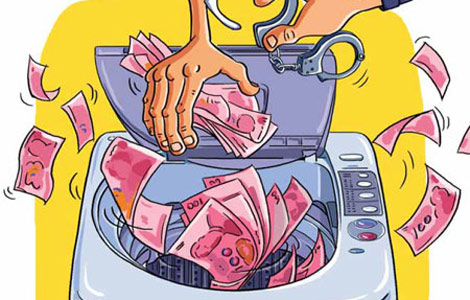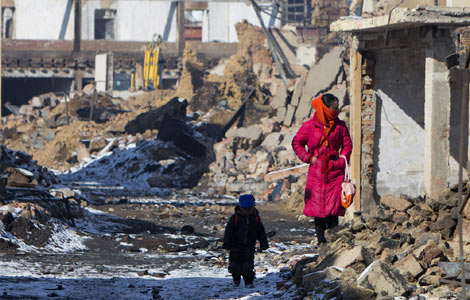In a more sustainable gear
Updated: 2014-01-21 07:19
(China Daily)
|
|||||||||||
China's 7.7-percent GDP growth in 2013 has been in the spotlight, as it is the slowest in more than a decade.
That is surely a correct reading of the speed at which the world's second-largest economy is expanding. But this should no longer be the defining gauge of China's economy as it undergoes a necessary transformation toward greater sustainability.
According to the National Bureau of Statistics, China's gross domestic product was 56.88 trillion yuan ($9.3 trillion) last year, up 7.7 percent year-on-year.
Although this performance was the strongest among major economies around the world, China has ostensibly failed to impress those that have seemingly become too accustomed to its double-digit growth.
Pessimistic headlines such as "flat growth," "slowest expansion in 14 years" and "warning of deep-rooted problems" immediately prevailed. But, of course, these do not tell the real story of the Chinese economy, as the transformation, which will end up being more exciting than the pace of economic expansion alone, is at present less sensational than the fact that the brakes have been applied.
But as China goes all out to shift its growth pattern to one that is less polluting, more balanced and sustainable, one should not be surprised to find that the country's service sector has become not only the largest but also the fastest-growing driver of the national economy.
The service sector expanded by 8.3 percent last year to 26.2 trillion yuan while the industrial sector grew by 7.8 percent to 25 trillion yuan and the agricultural sector by 4.0 percent to 5.7 trillion yuan.
This explains why China still managed to create more than 10 million new jobs last year while tackling the overcapacities in some polluting and energy-consuming industries.
Besides, the steadily rising median income levels in both urban and rural areas reveal that more subtle but vital progress is being made in rebalancing the distribution of national wealth.
Although the huge income gap between urban and rural areas remains a leading challenge for Chinese policymakers, the latest data point to a narrowing income gap and a bigger share of the national wealth for labor.
And if the International Monetary Fund's latest warning that income inequality is not a recipe for stability and that sustainability is to be heeded, China has simply more reason to put inclusiveness before the speed of growth.
Related Stories
China's GDP growth in 2014 may drop to 7.5%: expert 2014-01-20 13:41
Experts: GDP growth within expectation 2014-01-20 11:15
Guangdong sees GDP growth of 8.5 percent 2014-01-16 22:06
Reforms, other factors to drag on GDP 2014-01-15 10:19
Today's Top News
West, Iran activate landmark nuclear deal
Human spread of H7N9 'sporadic'
Xi writes to Chinese in German colleges
China software to rival Android
Will China dominate the world?
Mainland policy lures HK students
Obama tells Germans he will not wiretap
Party is over for SOEs conferences
Hot Topics
Lunar probe , China growth forecasts, Emission rules get tougher, China seen through 'colored lens', International board,
Editor's Picks

|

|

|

|

|

|





